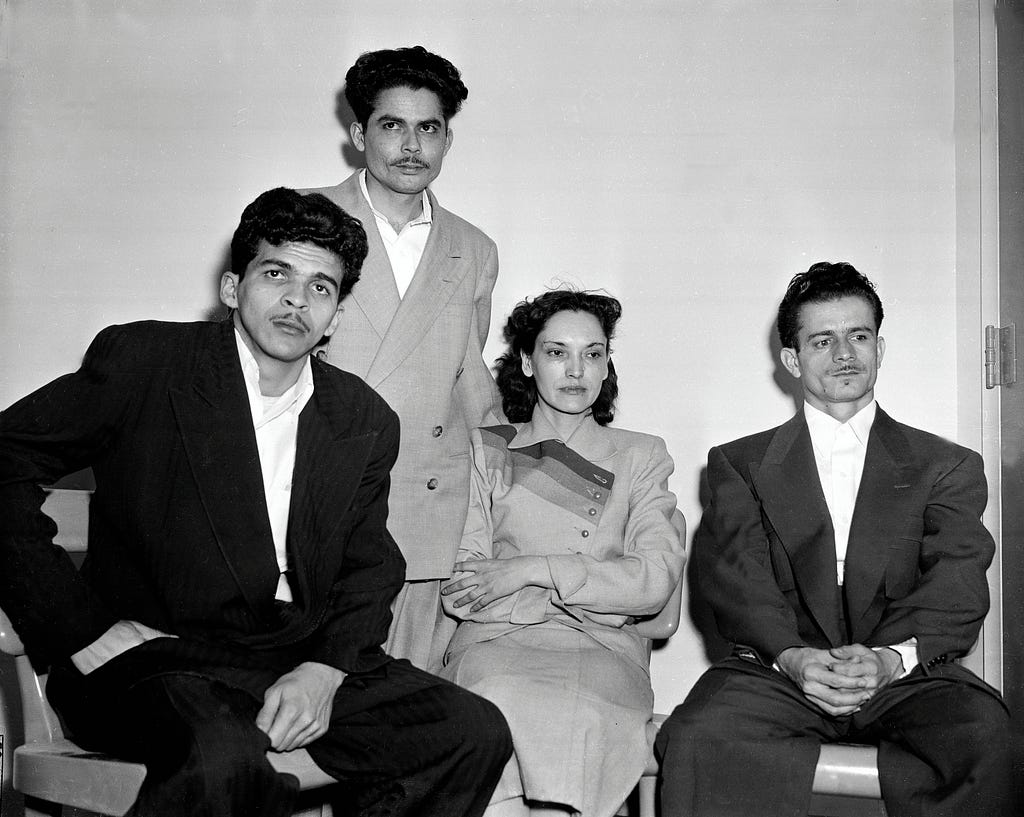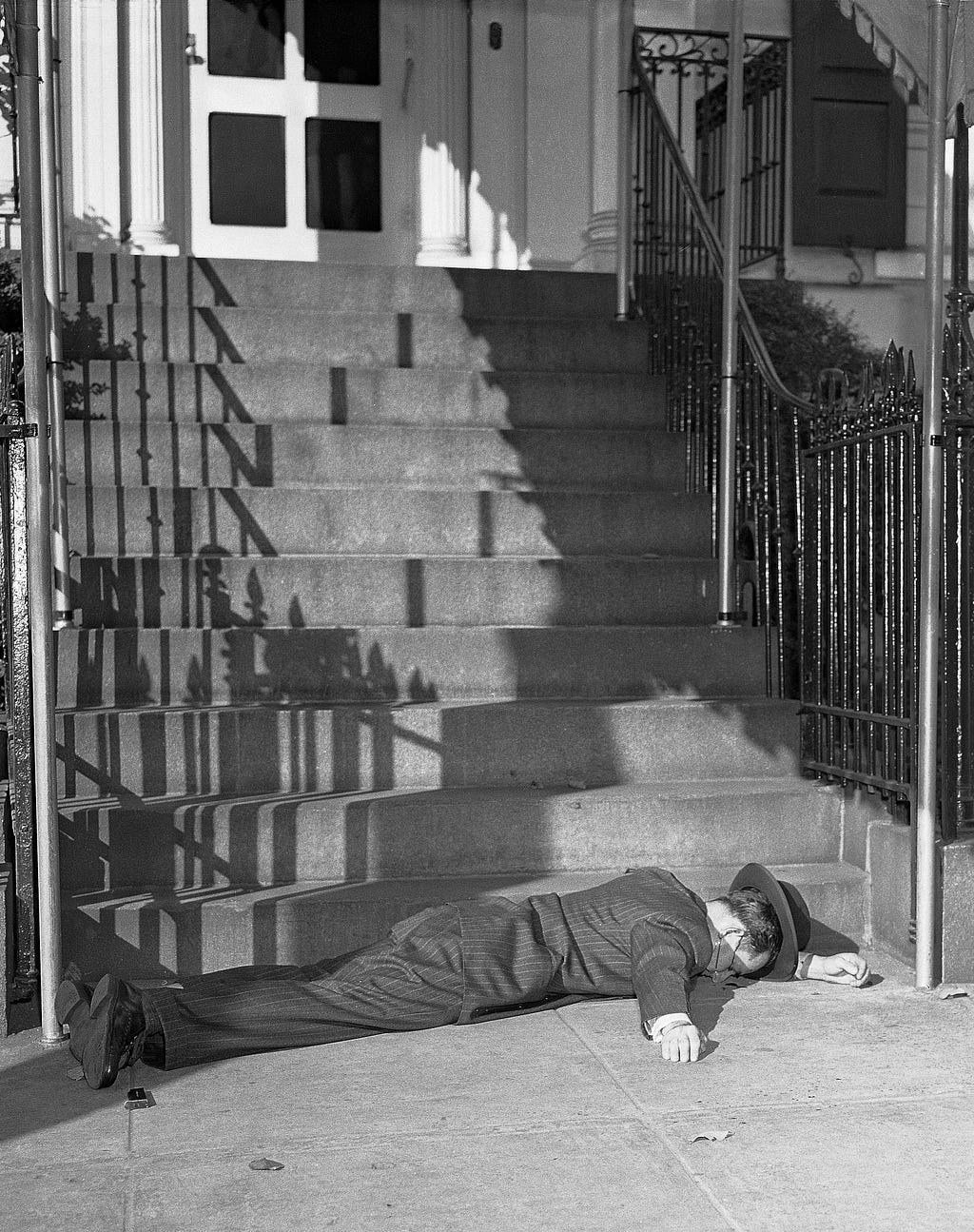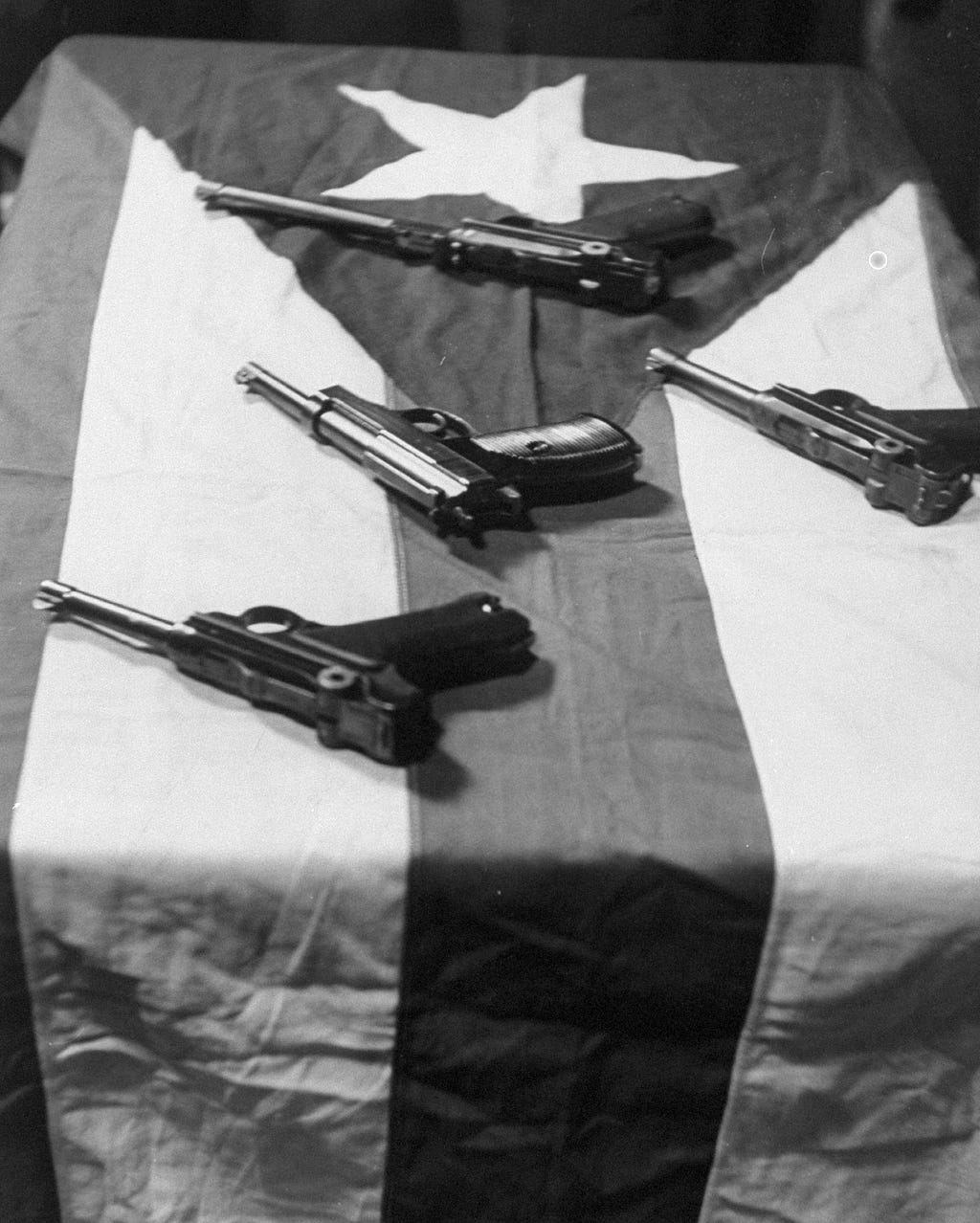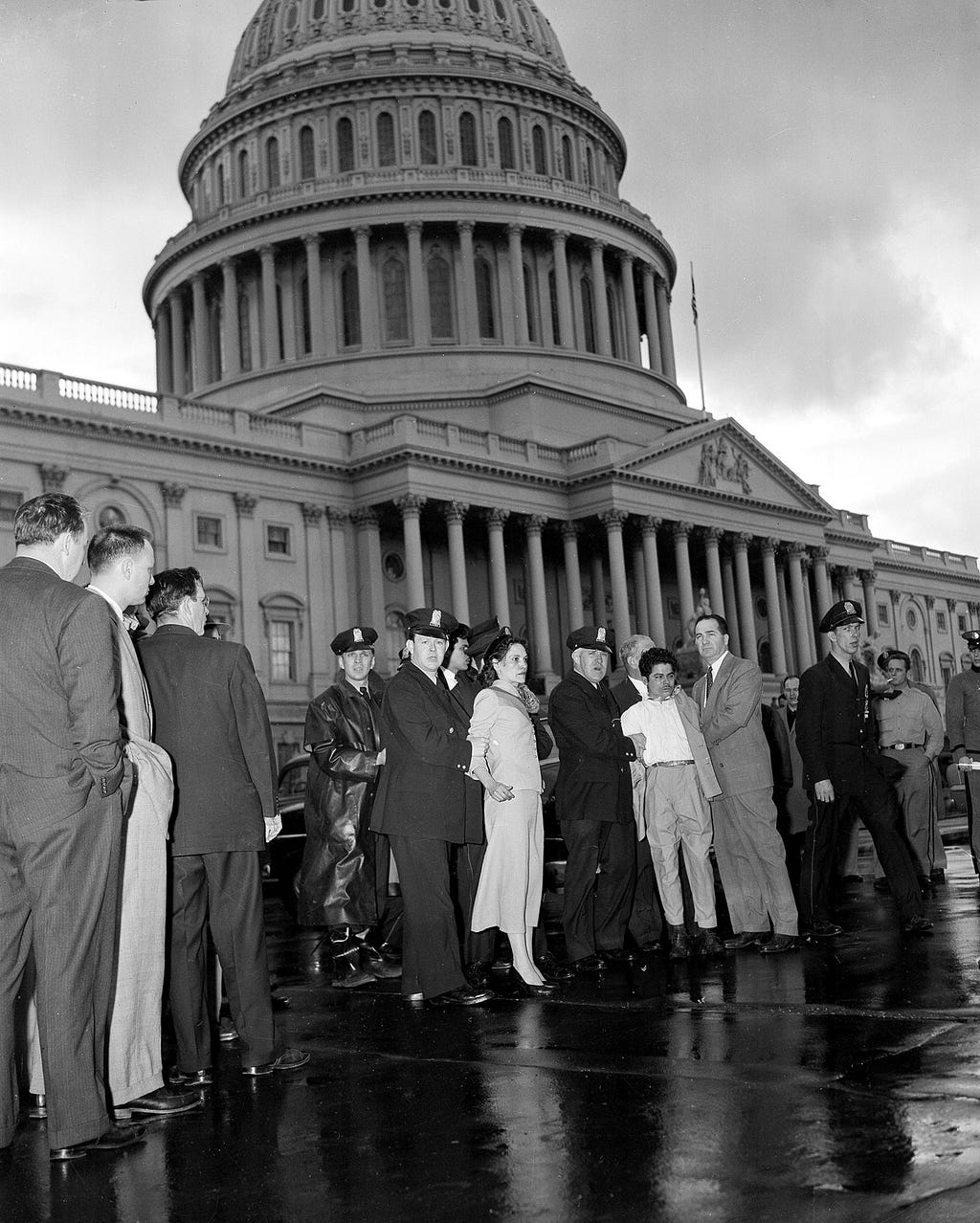
On the afternoon of March 1, 1954, four armed Puerto Rican nationalists entered the United States Capitol building. Security guards stopped the group — consisting of three men and one woman — and asked them if they had cameras. They did not. The quartet then proceeded to an upper gallery of the House chamber. Below them, members of the Congress were debating a bill.
They drew guns and began shooting down into the floor of the House. It was the the most severe assault in the history of the Capitol building. In all, five members of Congress were hit, and while some were critically wounded, they all survived.
The 1950s were seeing progressively rising tensions between the U.S. and the Puerto Rican nationalists. In 1950, the United States granted permission to Puerto Rico to draft its own constitution, while more or less forbidding it a track to independence. The Puerto Rican Nationalist Party, which had endured domestic suppression and conflict for two decades (one 1948 law prohibited the flying of the Puerto Rican flag), were outraged by what they viewed as colonial rule. On October 29, 1950, the party incited uprisings against U.S. and local government forces across Puerto Rico. America sent fighter planes armed with machine guns to control the riots. Nine nationalists were killed, including five who were executed in a police station without trial.
Following the nationalist defeat, a couple days later on November 1, two nationalists attacked Blair House in Washington, D.C. where President Harry Truman was living during White House renovations, with the intent of killing him. The shooters were suppressed following a gun battle with Secret Service and police officers outside the door. One shooter and one United States officer died in the firefight.
In 1952, Puerto Rico drafted a constitution to continue its territorial relationship with the U.S., a measure that 82 percent of Puerto Ricans supported. The nationalists were incensed. Their leader, Pedro Albizu Campos, was in prison at the time, but was determined to maintain the fight for independence. He coordinated with Puerto Rican exiles stateside to execute more acts of political violence.

On the morning of March 1, 1954, four Puerto Rican-born New Yorkers named Lolita Lebrón, Rafael Cancel Miranda, Andres Figueroa Cordero, and Irvin Flores Rodríguez, took a train to Washington, D.C. with the intention of assassinating members of Congress and bringing international attention to Puerto Rico’s struggle for independence. The group did not expect to survive their attack. The four of them arrived in Union Station shortly after noon and had lunch. The walk to the Capitol from the station is only a few blocks, but on the way they got lost, and in the unpleasant weather the men in the group got cold feet.
Lebrón was their leader, however, and had been the one to arrange the attack while Campos was in prison. Later, her high heels and red lipstick would capture reporters’ attention in the aftermath of the shooting. When her companions expressed doubts about executing their attack that day, she said “I am alone,” and continued forward. Her partners followed.
Entering alongside a class of sixth-graders from Maryland, the nationalists had little trouble making their way up to the House Chamber Ladies’ Gallery. They each carried a .38 caliber German Luger-like pistol. Below them were 243 representatives and other members of congressional staff. In an ironic coincidence, representatives were debating an immigration bill concerning braceros — migrant Mexican workers to be permitted entry to the country to work in the farms of California and the Southwest.
At 2:32 p.m., people in the House Chamber heard a sequence of popping sounds resembling firecrackers. Paul Kanjorski, a 16-year-old page at the time, felt a spray of dust on his arm, reminding him of his days of target practice in the quarries of Pennsylvania. He was one of the first to glean the reality of the situation: members of Congress were under assault.
From the right corner of the gallery, the nationalists emptied rounds onto the House Chamber, while screaming “Viva Puerto Rico libre!” and waving a Puerto Rican flag.
Representative Alvin M. Bentley (R-Michigan), who took a bullet to the chest, was most severely wounded. Upon his arrival at the hospital doctors did not expect him to live. Ben F. Jensen (R-Iowa) was shot in the back, Clifford Davis (D-Tennessee) was shot in the leg, and wounded as well were George Hyde Fallon (D-Maryland) and Kenneth A. Roberts (D-Alabama).
Lebrón fired her eight shots at the ceiling, earning her the least sentence of the group for lacking the intent to kill. In fact, most of the 30 or so rounds fired at the House floor that day came from Rafael Miranda’s gun.


The bravery and quick action coming from actors on the House floor was striking. Pages helped carry the wounded Bentley and others to safety. One representative wrapped his tie around another congressman’s wounded leg. Congressman James Van Zandt of Pennsylvania mounted the stairs to the balcony and grabbed Miranda before he could escape. Three of the shooters were immediately captured by visitors and security guards and brandished before reporters outside the Capitol. The fourth escaped and was captured later that day.
Other response efforts did not go so smoothly. Arthur Cameron, a House page, called hospitals for ambulance assistance “There’s been a shooting in the House of Representatives,” Cameron said. “Kid, you shouldn’t joke about things like that,” said the man at the other end of the line, before hanging up.
The docility of the captured shooters reflected their expectations, which were not to escape but to die for Puerto Rico. As a note inside LeBron’s purse explained: “Before God and my world, my blood claims for the independence of Puerto Rico. My life I give for the freedom of my country. This is a cry for victory for our struggle for independence. The United States of America is betraying the sacred principles of mankind in their continuous subjugation of my country.”
The four were sentenced each to more than 49 years in prison, essentially a life sentence. Cordero died in 1979, and the remaining three were pardoned by President Jimmy Carter that same year. It is believed the pardonings came as part of a negotiation for the release of U.S. intelligence officials incarcerated in Cuba, but the White House denied this.
Lebrón relinquished her commitment to nonviolence, though went on to become a revered figure among Puerto Ricans, and died in 2010. Rafael Cancel Miranda is the last surviving member of the four shooters. Meanwhile, Puerto Rican public opinion has drifted even further from independence. A 2012 referendum showed that only about 5 percent of citizens preferred independence, and 61 percent actually supported statehood. And the most recent referendum, in June 2017, showed 97 percent of Puerto Ricans in favor of making the island a state.
In 1954, these four Puerto Rican radicals stormed the Capitol and started shooting U.S. congressmen was originally published in Timeline on Medium, where people are continuing the conversation by highlighting and responding to this story.
Powered by WPeMatico